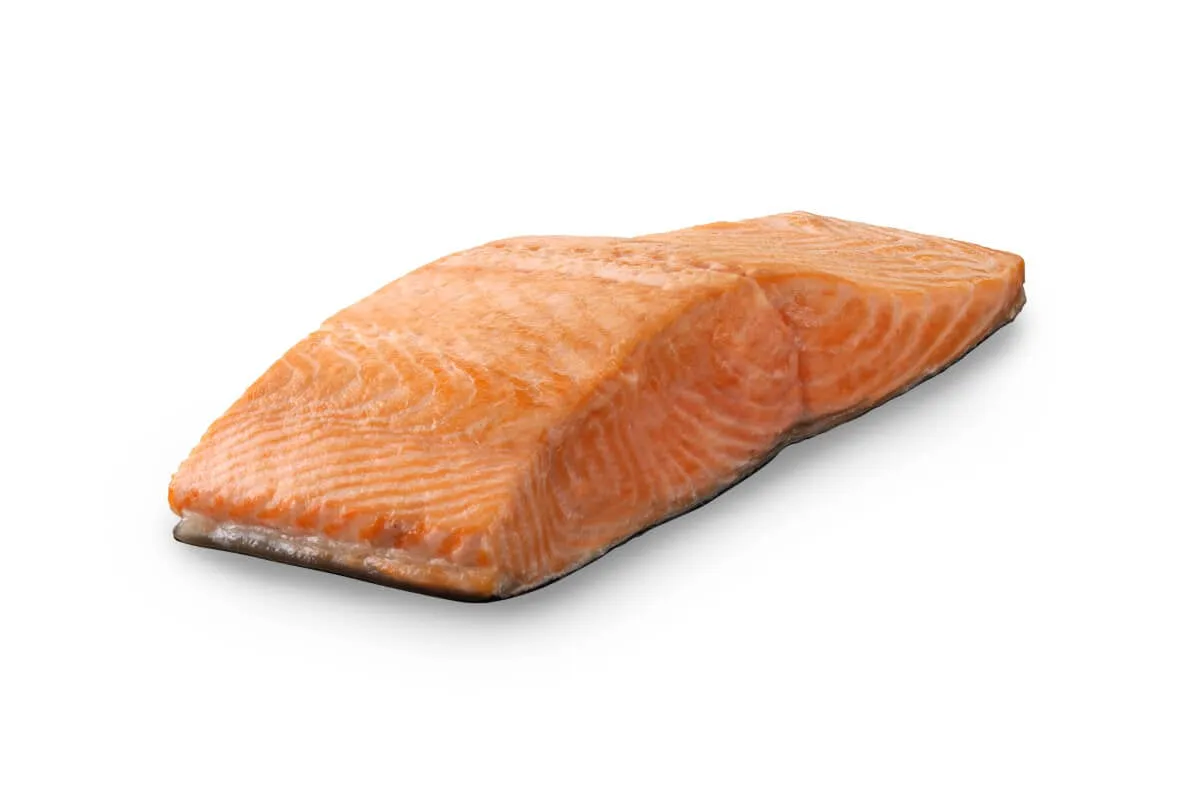Many cherished canine companions experience the discomfort of sensitive skin, manifesting as persistent itching, dryness, redness, or even hot spots. These issues can significantly impact a dog’s quality of life, leading to frustration for both pets and their owners. While environmental factors and allergies play a role, diet is a foundational element in managing and alleviating these symptoms. This article delves into how salmon dog food, rich in beneficial nutrients, can be a transformative solution for dogs with sensitive skin, promoting a healthy, vibrant coat and overall well-being. Selecting the right diet is a critical step towards soothing your dog’s skin, much like choosing the best skin and coat supplement for french bulldogs for targeted support.
Understanding Sensitive Skin in Dogs
Sensitive skin in dogs isn’t a singular condition but a symptom that can stem from various underlying causes. Common signs include excessive scratching, licking, chewing, dry or flaky skin, dull coat, and recurring ear infections. The culprits can range from environmental allergies (pollen, dust mites) to parasites (fleas, mites) and genetic predispositions. However, food sensitivities and allergies are increasingly recognized as major contributors to dermatological problems in dogs. Certain proteins or grains in their diet can trigger an inflammatory response, which often presents itself through skin issues. A thoughtful approach to diet, focusing on novel proteins and easily digestible ingredients, is essential for identifying and mitigating these triggers.
Why Salmon Dog Food is a Game-Changer for Sensitive Skin
Salmon-based dog food stands out as an excellent choice for pets with sensitive skin due to its unique nutritional profile. It’s not just a delicious option for dogs; it’s packed with ingredients specifically known to support dermal health and reduce inflammation.
The Power of Omega Fatty Acids
The cornerstone of salmon’s benefits for sensitive skin lies in its abundance of Omega-3 and Omega-6 fatty acids. Salmon is naturally rich in Omega-3s, particularly EPA (eicosapentaenoic acid) and DHA (docosahexaenoic acid). These potent anti-inflammatory compounds work at a cellular level to reduce the body’s inflammatory response, which is often behind the itching and redness associated with sensitive skin. They help to strengthen the skin’s natural barrier, locking in moisture and protecting against environmental irritants. While Omega-6 fatty acids are also crucial for skin hydration and coat luster, a balanced ratio with Omega-3s is vital to prevent exacerbating inflammation. Many high-quality salmon dog foods are formulated to provide this optimal balance.
High-Quality Protein Source
For dogs with food sensitivities, identifying and avoiding common protein allergens like chicken or beef is paramount. Salmon serves as an excellent “novel protein” source for many dogs, meaning it’s less likely to have been encountered frequently in their diet, thus reducing the chance of an allergic reaction. This lean, high-quality protein not only supports strong muscle development and overall vitality but does so without triggering the inflammatory responses that can lead to skin issues.
Digestibility and Nutrient Absorption
Beyond its fatty acid profile, salmon is typically highly digestible for dogs. When a dog’s digestive system can efficiently break down and absorb nutrients, it reduces the likelihood of gut inflammation, which can manifest externally as skin problems. Furthermore, well-absorbed nutrients contribute to a healthier immune system, allowing the body to better combat allergens and maintain skin integrity.
 A close-up of high-quality salmon fillets, rich in omega fatty acids
A close-up of high-quality salmon fillets, rich in omega fatty acids
Key Ingredients for Optimal Skin Health Beyond Salmon
While salmon is the star, a truly beneficial dog food for sensitive skin incorporates a symphony of supporting ingredients that work synergistically to enhance dermatological health. These ingredients are chosen not only for their nutritional value but also for their soothing and protective properties.
Oatmeal is a wholesome grain known for its gentle nature and soothing properties. Rich in B vitamins and dietary fiber, it aids in healthy digestion, which is intrinsically linked to skin health. For dogs with sensitive stomachs, oatmeal can provide a readily digestible energy source without causing irritation. Flaxseed is another powerhouse ingredient, offering additional Omega-3 fatty acids, along with a significant amount of fiber that further supports digestive regularity and promotes a healthy skin and coat.
Fish oil, often included as a supplementary ingredient, provides a concentrated boost of EPA and DHA, maximizing the anti-inflammatory benefits. Pumpkin, celebrated for being more than just a fiber source, is rich in vitamins, minerals, and antioxidants that contribute to overall digestive health, a cornerstone for managing skin sensitivities. Finally, cranberries, packed with antioxidants like vitamins C, E, and K, along with manganese, contribute to a robust immune system, helping the body manage oxidative stress and maintain healthy skin. Understanding these ingredients helps in choosing healthy food to feed dogs and even exploring options like the healthy kitchen dog food for home-prepared meals.
 Healthy dog enjoying its meal, illustrating good digestion and coat health
Healthy dog enjoying its meal, illustrating good digestion and coat health
What to Look for in a Salmon Dog Food for Sensitive Skin
When selecting salmon dog food for your sensitive pup, paying close attention to the ingredient list and brand promises is crucial. Not all salmon formulas are created equal, and a few key indicators can help you make the best choice.
First and foremost, real salmon should be the very first ingredient listed. This ensures that the primary protein source is high-quality and abundant. Beyond that, scrutinize the label for the absence of common allergens and artificial additives. Reputable brands will explicitly state “NO corn, wheat, or soy,” and ideally, “NO chicken (or poultry) by-product meals, artificial flavors, or preservatives.” These omissions are vital for dogs prone to sensitivities.
Look for formulas that are enhanced with a precise blend of vitamins, minerals, and other nutrients. These additions are essential for supporting overall health, immunity, and skin repair. Many premium brands also include exclusive blends, such as antioxidant-rich LifeSource Bits™. These bits are a careful selection of antioxidants, vitamins, and minerals, often cold-formed to retain their potency. They help support the immune system, meet specific life stage requirements, and maintain a healthy oxidative balance, all of which indirectly contribute to healthier skin. A strong immune system is paramount for any dog, and these comprehensive nutrient packages are just as important as specialized care for best supplements for aging dogs who might also experience increased sensitivities.
 Dog food kibble with LifeSource Bits for immune support
Dog food kibble with LifeSource Bits for immune support
Transitioning Your Dog to a New Diet
Changing your dog’s food, especially for those with sensitive skin, should always be a gradual process to avoid upsetting their digestive system. A sudden switch can lead to gastrointestinal distress, which can further complicate skin issues. A recommended timeline involves slowly introducing the new salmon dog food over 7 to 14 days. Start by mixing 25% new food with 75% old food for the first few days. Gradually increase the percentage of the new food while decreasing the old food over the subsequent days until your dog is eating 100% new food. Throughout this transition, ensure your dog always has access to a clean bowl of cool, fresh water. Water is vital for hydration and overall bodily functions, including skin health. If you observe any adverse reactions during the transition, or if your dog’s sensitive skin issues persist, it is always best to consult with your veterinarian for personalized advice and to rule out other underlying health concerns.
Conclusion
Choosing the right Salmon Dog Food For Sensitive Skin can make a profound difference in your dog’s comfort and well-being. By understanding the critical role of omega fatty acids, high-quality protein, and complementary ingredients, you can make an informed decision that supports a healthy skin barrier, reduces inflammation, and promotes a lustrous coat. Always prioritize formulations free from common allergens and artificial additives, and ensure a gradual transition to the new diet. By providing a diet specifically designed to address their sensitivities, you’re not just feeding your dog; you’re nurturing their health from the inside out. Prioritize your dog’s well-being with a diet designed for sensitive skin, and consult your vet for personalized advice.
